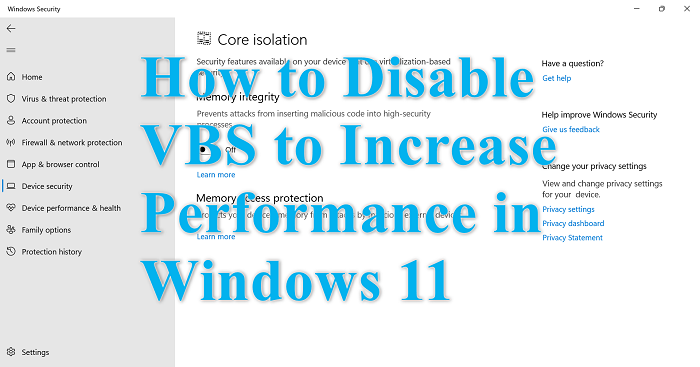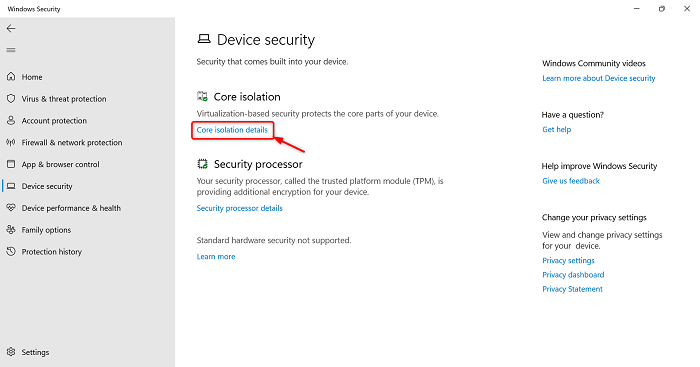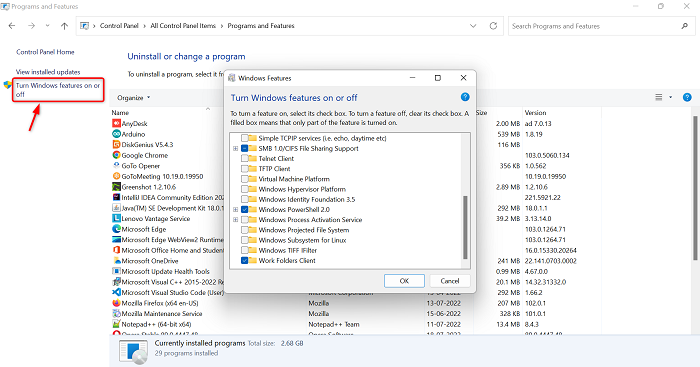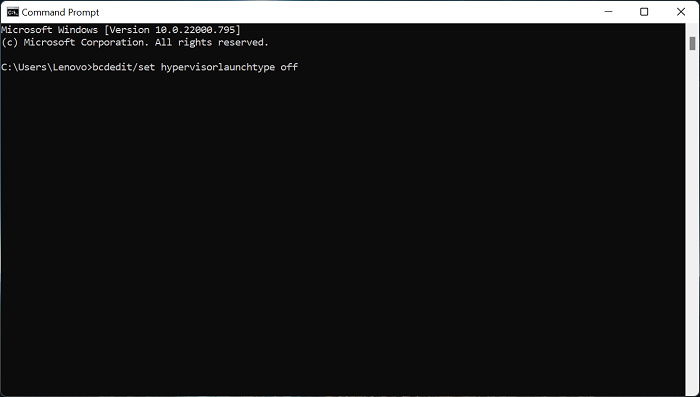In this post, we will explain what is Virtualization Based Security (VBS), and how to disable VBS on Windows 11 computers. Virtualization Based Security (VBS) is a security feature that uses hardware/software virtualization. VBS is a security functionality included in Windows 11, allowing users to prevent unsigned drivers, codes, software, etc., from residing in the memory of your system. It creates a secure and isolated region of memory from the regular operating system, allowing users to host various security solutions. Disabling VBS has been reported to improve the performance of Windows 11. So if you are a gamer especially and want to see if this improves gaming performance, then this post may interest you.

How to disable VBS in Windows 11
If you want to disable VBS (Virtualization-Based Security) on your Windows 11/10 computer, you can follow any one of these methods:
- Use Windows Setting to Disable VBS
- Use the Local Group Policy Editor
- Turn off Windows Virtualization Features
- Use Command Prompt to Disable VBS
- Disable VBS via the BIOS
1] Use Windows Settings to Disable VBS

If you want to disable VBS, you can perform the following steps.
- Press the Window + I keys to launch the Setting app
- Click on the Privacy and Security option on the left pane
- Click on the Windows Security > Open Windows Security option
- Windows Security app will launch.
- Now, click on the Device Security option on the left pane
- Go to the Core isolation section and click on the Core isolation details option
- Now, check whether the Memory Integrity option is disabled or not. If it is active then click on it to disable this feature
After that, restart your system and use some apps and games to check the performance of the system
2] Use the Local Group Policy Editor

By using Group Policy Editor (GPE) you can turn off VBS permanently, but keep in mind that GPE is not available for Windows 11 Home users. After opening the Group Policy Editor, you can disable it easily.
- Press Window + R keys to launch the Run command box
- Type gpedit.msc and click on the OK button to launch the Group Policy Editor
- Navigate to the Local Computer Policy > Computer Configuration > Administrative Templates > System > Device Guard
- In Device Guard, double click on the Turn On Virtualization Based Security policy
- Check the Disabled option and then click on Apply
- After that, click on OK to close the Window
Once done, restart your computer.
Also read: How to reset all Local Group Policy settings to default
3] Turn off Windows Virtualization Features

If you want to turn off VBS then you have to uninstall a few Windows Features. Follow the below steps to uninstall a few Windows features.
- Click on the Window icon and type Control Panel on the search bar
- Open the Control Panel
- Make sure that View by is set on the Large icon
- Click on the Program and Features option
- Go to the upper left corner and click on the Turn Windows Features on or off option
- Windows Feature will launch.
- Uncheck the box of the options Microsoft Defender Application Guard, Virtual machine Platform, and Windows Hypervisor Platform
- Click on the OK button
Now, you need to restart your system to apply the changes. After that, revisit the Windows Features to check whether all the Virtualization Features are present or not.
Also read: How to Disable or Enable Hardware Virtualization in Windows
4] Use Command Prompt to Disable VBS

Here is another option to turn off the VBS, and that is the command prompt. Use the below steps to disable VBS by using the command prompt.
- Open the Window search bar by pressing the Window icon
- Type the Command Prompt on the search bar and click on the Run as administrator
- Type the below command on the command prompt
bcdedit/set hypervisorlaunchtype off
- After that, press Enter key to execute the command
- After completing the execution process close the command prompt
After completing all the processes, restart your system. Now, use some applications or games to check your computer performance.
5] Disable VBS via the BIOS

If any options given above are unable in disable the VBS, then you can disable the virtualization technology on the computer from BIOS. Follow the below steps to do so.
- First of all, Restart your PC
- Then, as your computer starts to boot up, press the F2 key in case of the AMD motherboard to get into BIOS configuration. This key may differ for you depending on your manufacturer.
- After you go inside the BIOS, go to the Advanced Mode
- Now, click on the Advanced tab at the top and then select the CPU configuration option
- After that disable the SVM Mode
- After disabling the SVM Mode, press the F10 key on your keyboard to save and exit
After completing the processes, restart your computer to save the changes.
Read: Improve Windows 11 Performance by tweaking these settings
How do I know if VBS is enabled in Windows 11?
If you want to check whether VBS is enabled or not on your Windows PC, you can check it by following the below steps.
- Firstly click on the Window icon to open the Start Menu
- Type MSSinfo32 and press Enter
- Now, on the System Information page, scroll down the page till the last
- Now, you can see if the VBS is enabled or not on your PC
- You can use the same process to see if VBS is enabled or not in Windows 10 too
Read: Virtualization-based Security not enabled in Windows 11
Should I turn VBS off on Windows 11?
VBS is Virtualization Based Security, and it’s a security feature that uses hardware/software virtualization. It may have negative effects on PC performance. Certain security features of VBS can give gaming performance a hit of 25%. Therefore it may be necessary for some to turn off VBS if you want to enjoy the full potential of your Windows 11 PC gaming performance.
Read: Tips to improve gaming performance in Windows.
Leave a Reply